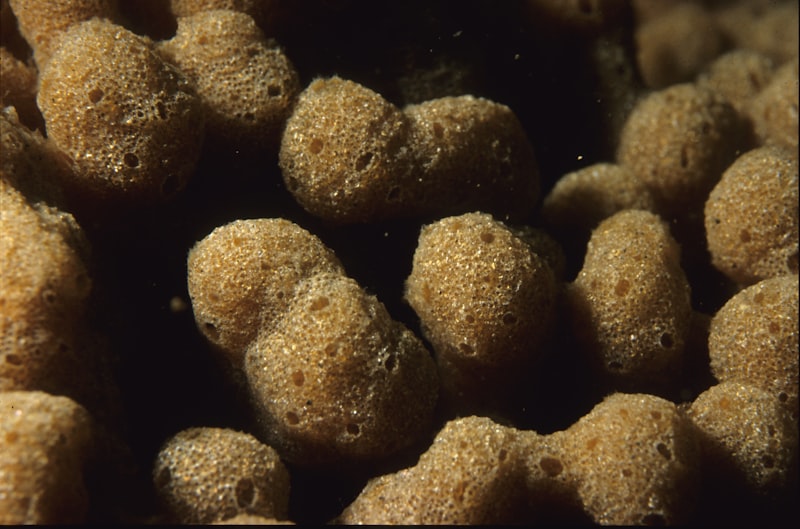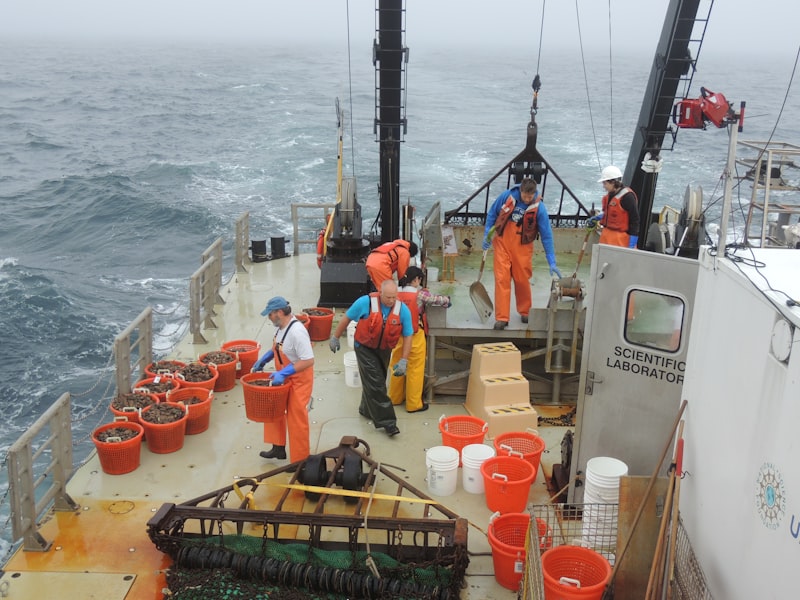Have you ever wondered about the fascinating world of marine invertebrates and how they reproduce? The reproductive biology of these creatures holds a treasure trove of marvels, each species adapting uniquely to their oceanic environments. From corals to octopuses, their methods of reproduction are as diverse as the ocean itself.
Marine invertebrates employ various reproductive strategies to ensure the survival of their species. Some, like corals and sea anemones, reproduce asexually through budding or fragmentation, where new individuals sprout from parent organisms. This method allows them to rapidly colonize new habitats and recover from disturbances in their environment.
On the other hand, many marine invertebrates reproduce sexually, showcasing intricate behaviors and adaptations. Take the majestic octopus, for instance. These intelligent creatures engage in elaborate courtship rituals, where males display vibrant colors and intricate patterns to attract females. Once mating occurs, females can lay thousands of eggs, which they diligently protect until they hatch.
For others like sea stars and sea urchins, external fertilization is the norm. Males and females release their gametes into the water simultaneously during spawning events, relying on ocean currents to bring them together for fertilization. This synchronized ballet of reproduction ensures genetic diversity and resilience in their offspring.

The life cycles of marine invertebrates are often tied closely to environmental cues such as temperature, lunar cycles, and nutrient availability. These factors influence the timing of spawning and larval development, critical for the survival of their young in the vast and competitive marine world.
Exploring the reproductive biology of marine invertebrates unveils a world of wonder and adaptation. Each species has evolved strategies that best suit their ecological niche, ensuring the continuation of life beneath the waves.
Unveiling the Mysterious Mating Rituals of Deep-Sea Squid: Insights from Reproductive Biology
Deep-sea squids, inhabiting the abyssal plains thousands of meters below the surface, face unique challenges in finding mates. The male deep-sea squid possesses specialized reproductive organs designed for efficiency in the darkness where they reside. These creatures rely heavily on sensory adaptations rather than visual cues, utilizing bioluminescence and chemical signals to attract potential mates over vast distances.
Unlike their shallow-water counterparts, deep-sea squids exhibit behaviors and strategies tailored to their extreme environment. Mating rituals often involve elaborate displays of bioluminescent patterns that mesmerize and communicate readiness to reproduce. These displays not only serve as courtship signals but also aid in species recognition and mate selection in the absence of direct physical encounters.
Reproductive success in deep-sea squids hinges on timing and environmental cues. The timing of mating seasons aligns with optimal conditions for offspring survival, ensuring that newly hatched squids have the best chance of survival in the harsh deep-sea environment. Females carefully choose nesting sites and invest significant energy in producing nutrient-rich eggs, essential for the survival and development of their young.
The study of deep-sea squid mating rituals provides crucial insights into the adaptations of marine life to extreme environments. By unraveling the mysteries of their reproductive biology, scientists gain a deeper understanding of biodiversity in the ocean’s depths and the intricate interconnectedness of species within these ecosystems.
From Hermaphroditism to Parthenogenesis: Evolutionary Wonders in Marine Invertebrate Reproduction
Imagine a world where creatures can change sex at will or reproduce without mating. This is the reality for many marine invertebrates. Hermaphroditism, the ability to possess both male and female reproductive organs, allows organisms like certain sea slugs and some fish to efficiently reproduce without the need for a partner. This adaptation ensures reproductive success even in environments where finding a mate may be challenging.
On the other hand, parthenogenesis takes reproduction to another level of marvel. In this process, females can produce offspring without fertilization by a male. This incredible adaptation is observed in various species of sea stars, crustaceans, and certain types of jellyfish. By bypassing the need for mating, these organisms can rapidly populate areas or survive in isolated environments where mates are scarce.
These reproductive strategies not only showcase the diversity of life but also highlight the adaptability of marine invertebrates to their environments. From the bustling coral reefs to the depths of the ocean trenches, these evolutionary wonders continue to amaze researchers as they uncover the complexities of life below the waves.
Understanding these phenomena not only expands our knowledge of marine biology but also raises intriguing questions about the origins and future of life on Earth. How do these adaptations arise? What ecological pressures drive such diversity in reproductive strategies? Exploring these questions not only deepens our appreciation for the natural world but also underscores the importance of conservation efforts to protect these unique and often vulnerable species.
From hermaphroditism to parthenogenesis, marine invertebrates offer a glimpse into the astonishing diversity and adaptability of life. Each reproductive strategy tells a story of survival and evolution in a world where the unexpected thrives and amazement awaits around every coral corner.
The Secret Lives of Coral Reef Spawners: How Marine Invertebrates Ensure Survival

Imagine a bustling metropolis beneath the waves, where corals are not just stationary creatures but active participants in a grand biological event. During specific times of the year, often triggered by lunar cycles or environmental cues, corals release millions of tiny gametes into the water. These gametes, akin to underwater seeds, hold the genetic blueprint for new coral life.
The process is a delicate ballet of timing and environmental synchronization. Each species has its own precise moment to release gametes, ensuring that fertilization occurs optimally. This synchronized spawning not only maximizes the chances of successful reproduction but also enhances genetic diversity within coral populations, crucial for resilience against environmental stressors such as rising ocean temperatures and pollution.
But what makes this phenomenon truly awe-inspiring is its scale and complexity. Picture a coral reef transformed into a vast reproductive arena, where corals release clouds of eggs and sperm simultaneously, creating a breathtaking underwater snowstorm. The fertilized gametes then develop into larvae, which drift with ocean currents before settling on the seabed to form new colonies, perpetuating the cycle of life.
This natural spectacle underscores the resilience and adaptability of coral reefs, often referred to as the “rainforests of the sea” due to their incredible biodiversity and ecological importance. By understanding the secret lives of coral reef spawners, scientists can better comprehend and conserve these fragile ecosystems. Conservation efforts aimed at protecting spawning grounds and reducing human impacts on coral reefs are crucial to ensuring their survival in the face of global environmental challenges.
A Closer Look at Spawning Synchrony: How Marine Invertebrates Coordinate Reproduction
Spawning synchrony refers to the remarkable phenomenon where marine invertebrates, such as corals, sea stars, and certain species of fish, coordinate their reproductive activities to maximize the chances of successful fertilization. Picture this: in the vastness of the ocean, under the shimmering moonlight, thousands of individuals release their gametes into the water simultaneously. It’s a spectacle that not only ensures genetic diversity but also plays a crucial role in the survival of these species.
But how do they do it? The secret lies in environmental cues. Marine invertebrates have evolved intricate mechanisms to detect subtle changes in their surroundings, such as temperature, salinity, and even lunar cycles. These environmental signals act as triggers, signaling to the organisms that conditions are optimal for reproduction. Imagine a grand orchestra where each member plays their part precisely on cue, ensuring harmony in the symphony of life.
Take coral reefs, for instance. These vibrant ecosystems rely heavily on spawning synchrony for their continued existence. Once a year, usually after a full moon, various coral species release their gametes in a spectacular event known as coral spawning. The timing is critical as it increases the chances of fertilization, enhances genetic diversity, and replenishes the reef’s resilience against environmental stressors.
Interestingly, some marine invertebrates take it a step further by synchronizing not just the timing but also the location of their spawning. This behavior reduces the likelihood of gametes being diluted or lost in the vastness of the ocean, thereby increasing the chances of successful fertilization and larval survival.
Spawning synchrony among marine invertebrates is a marvel of natural coordination. It’s a testament to the evolutionary adaptations that enable these creatures to thrive in dynamic and often challenging marine environments. Next time you find yourself by the ocean, marvel at the complexity and beauty of nature’s perfectly timed reproductive dances happening beneath the waves.
Beyond Fertilization: How Marine Invertebrates Navigate Larval Development
Ever wondered how marine invertebrates, beyond just fertilization, navigate the intricate process of larval development? It’s a journey as fascinating as it is crucial for their survival in the ocean’s vast ecosystem.
Larval development in marine invertebrates is a complex yet essential phase in their life cycle. Unlike many terrestrial organisms, these creatures undergo metamorphosis from a larval to an adult form, adapting to various environmental challenges along the way. This transformational process not only shapes their physical characteristics but also influences their ecological roles.
One of the remarkable aspects of larval development is how these tiny organisms manage to disperse across oceanic expanses. Imagine them as adventurous voyagers embarking on a journey fraught with challenges and opportunities. They utilize currents, tides, and even biological cues to navigate, ensuring they find suitable habitats for growth and survival.
Biologists have studied the mechanisms behind larval navigation extensively. It involves a combination of sensory abilities that allow these tiny creatures to detect environmental cues, such as light and chemical signals, guiding their movements towards favorable conditions. This ability to perceive and respond to subtle changes in their surroundings is crucial for their survival in dynamic marine environments.
Moreover, larval development plays a pivotal role in the biodiversity of marine ecosystems. By dispersing over vast distances, these larvae contribute to genetic diversity and population dynamics of marine communities. They serve as essential links in the food web, sustaining larger marine organisms and supporting fisheries and coastal economies.
The journey of marine invertebrates through larval development is a testament to nature’s resilience and adaptability. It highlights the intricate balance between survival instincts and environmental influences, showcasing the marvels of evolution in the ocean realm.
This article aims to capture the reader’s interest with engaging language, vivid imagery, and a conversational tone, while also providing valuable information about larval development in marine invertebrates.
Frequently Asked Questions
How Do Marine Invertebrates Reproduce Without Mating
Marine invertebrates reproduce without mating through a process called asexual reproduction. This can include methods like budding, fragmentation, or parthenogenesis, where offspring develop from unfertilized eggs. These methods allow these organisms to reproduce independently of a mate.
What are the Different Reproductive Strategies in Marine Invertebrates
Learn about the diverse reproductive strategies employed by marine invertebrates, from external fertilization in broadcast spawners to internal brooding and larval development. Understand how these strategies enhance survival in varied marine environments.
What Factors Influence Reproduction Timing in Marine Invertebrates
Factors influencing reproduction timing in marine invertebrates vary widely and include environmental cues like temperature and daylight length, as well as biological factors such as maturity and food availability. Understanding these influences is crucial for predicting breeding seasons and population dynamics.
How Do Marine Invertebrates Ensure Fertilization in Varying Marine Environments
Discover how marine invertebrates ensure fertilization in diverse marine environments. This FAQ explores the fascinating methods these organisms employ, adapting to different conditions to successfully reproduce and sustain their populations.
What Are the Impacts of Environmental Changes on the Reproduction of Marine Invertebrates
Learn about how environmental changes affect the reproduction of marine invertebrates. Understand the direct impacts of factors like temperature, acidity, and pollution on their reproductive cycles and population dynamics.


